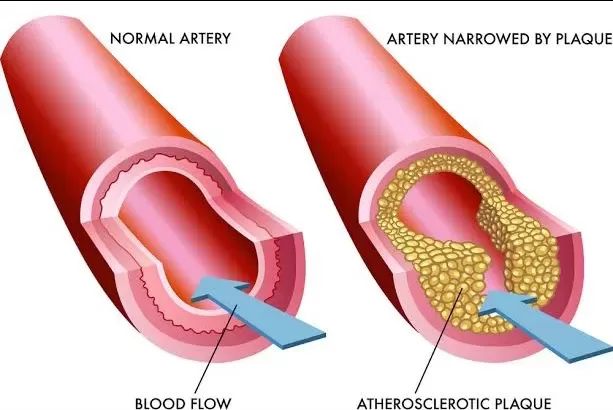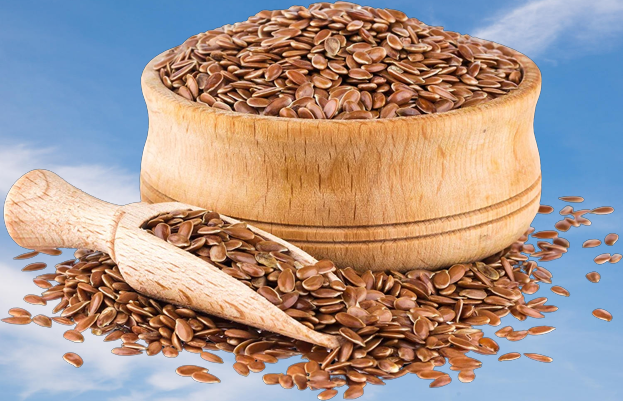Atherosclerosis is a chronic, multifactorial illness primarily defined by alterations in blood lipid profiles and inflammation of the artery wall. The biggest cause of death in developed nations is currently cardiovascular disease, which is based on atherosclerosis. As a result, the chance of developing atherosclerosis and its clinical signs can be decreased with prompt diagnosis, treatment, and prevention.
Anti-atherosclerosis activity comes from medicinal plants’ anti-inflammatory, antioxidant, anti-atherogenic, hypotensive, lipid-lowering, and anti-thrombotic properties. However, the majority of medicinal herbs have pleiotropic anti-atherosclerotic properties.
Also, the pharmacological substances and/or compounds made from medicinal plants are relatively safe and have fewer side effects, which makes them a possible anti-atherosclerosis medicine. Clinical studies of carotid intima-media thickness (IMT) progression following long-term use of medicinal plants confirmed the direct anti-atherosclerotic activity of several medicinal plants.

The distinction between atherosclerosis and artery disease
Although the phrases “artery” and “atherosclerosis” are often confusing because many take them as synonyms and occasionally use them interchangeably, they have different meanings.
When the arteries, which are the blood vessels that carry oxygen and nutrients from the heart to the rest of the body, get thick and stiff, blood flow to the organs and tissues may be limited. This condition is known as arteriosclerosis. Flexible and elastic arteries indicate good health. However, the artery walls can stiffen over time, a phenomenon known as arterial hardening.
atherosclerosis is a subtype of Arteriosclerosis
The accumulation of lipids, cholesterol, and other chemicals in and on the artery walls is known as atherosclerosis. The accumulation is known as plaque. Atherosclerosis can constrict the arteries and obstruct blood flow. The plaque may rupture and cause a blood clot.
Even though atherosclerosis is frequently associated with heart issues, it can impact arteries throughout the body. Atherosclerosis can be cured. Adopting a healthy lifestyle can help stop atherosclerosis.
Atherosclerosis Symptoms
Symptoms of mild atherosclerosis are typically nonexistent.
Most of the time, symptoms of atherosclerosis don’t show up until an artery is so narrowed or blocked that it can’t get enough blood to organs and tissues. A blood clot can occasionally entirely stop the flow of blood. A heart attack or stroke may occur if the clot fragments.
Depending on which arteries are compromised, atherosclerosis can cause mild or severe symptoms. For instance, you might feel a kind of pressure or pain in your chest if you have atherosclerosis. Atherosclerosis narrows your heart’s arteries, causing pain. (angina).
If you have atherosclerosis in the arteries that lead to your brain, you may have sudden numbness or weakness in your arms or legs, trouble speaking or slurred speech, a brief loss of vision in one eye, or facial muscles that sag. They indicate a brief ischemic attack (TIA). A TIA can cause a stroke if left untreated.
If you have atherosclerosis in the arteries in your arms and legs, you may have symptoms of peripheral artery disease, like claudication or low blood pressure in a limb. People who have atherosclerosis in the arteries that lead to their kidneys are more likely to get high blood pressure or kidney failure.
Supplements and herbs for atherosclerosis

1. Garlic (Allium sativum)
Since the time the Egyptian pyramids were constructed, garlic has been used both as food and medicine. Gravediggers in France at the beginning of the 18th century thought that drinking crushed garlic in wine would keep them from getting the plague. Soldiers were fed garlic during World Wars I and II to stop gangrene. Additionally, it was applied to wounds as an antiseptic to avoid infection.
Garlic is now used to help avoid heart disease, high cholesterol, high blood pressure, atherosclerosis, or hardening of the arteries (plaque buildup in the arteries that can restrict the flow of blood and may lead to a heart attack or stroke), and to strengthen the immune system. Regular consumption of garlic may also help prevent cancer.
Antioxidants are abundant in garlic. Free radicals are bad molecules that build up in your body as you get older. They may be linked to heart disease, cancer, and Alzheimer’s. Antioxidants in garlic help fight off free radicals and may help lessen or even stop some of the damage they cause over time.
Gotu kola (Centella asiatica)
Gotu kola is an herb belonging to the parsley family. It has a lengthy history of use in both Ayurvedic and traditional Chinese medicine. Certain compounds found in Gotu kola appear to lower blood pressure and edema. Additionally, it appears to boost collagen formation, which could be advantageous for wound healing.
Gotu kola is used by people to treat burns and impaired circulation, which can cause varicose veins. It is also used to treat scars, stretch marks, and a number of other problems, but most of these uses are not well supported by science.
3. Chinese ginseng ( Panax ginseng)
It appears that Asian ginseng is an antioxidant. Free radicals, which are chemicals that can harm DNA and cause heart disease, diabetes, and other illnesses, are eliminated from the body by antioxidants. Asian ginseng, according to preliminary studies, may help people with symptoms of heart disease. Additionally, it might increase HDL (the good kind of cholesterol) and lower LDL (the evil kind).
The impact of Asian ginseng on blood pressure is more nuanced. Some studies have found that it lowers blood pressure, while others have found that it raises it. This has caused scientists to wonder whether ginseng raises blood pressure at typical doses but reduces it at higher levels. You shouldn’t take ginseng if you have high blood pressure until researchers are certain unless your doctor gives the all-clear.
4. Green tea
The three basic types of tea are oolong, green, and black. The way the teas are processed makes a difference. According to reports, green tea, which is brewed from unfermented leaves, has the highest concentration of potent antioxidants called polyphenols.
Antioxidants are molecules that protect the body from free radicals, dangerous substances that alter cells, harm DNA, and even kill cells. Free radicals are thought by many experts to play a role in atherosclerosis prevention as well as the aging process.
Population-based research suggests that the antioxidants in green tea may help prevent coronary artery disease and atherosclerosis. Population-based studies follow large groups of people over time or compare groups with different cultural or dietary backgrounds.
According to research, green tea lowers cholesterol and triglyceride levels, which lowers the risk of heart disease. Black tea, according to studies, has comparable effects. In fact, according to a study, drinking three cups of tea every day reduces the risk of a heart attack by 11%.
5. Grape Seed
Since ancient times, grapes (Vitis vinifera) have been praised for being good for your health and medicine. Ancient Indian Rishis and Sages ate grapes at least 6,000 years ago, and many early Vedic philosophers praised the fruit for its healing properties. As it lessens the buildup of plaque on the artery wall, it is extremely beneficial in the prevention of atherosclerosis.
A grape seed extract might help treat hypertension, which is another name for high blood pressure. Antioxidants, such as those in grape seed, aid in preventing blood vessel damage. Higher blood pressure may result from damaged blood vessels. In numerous experiments on animals, grape seed extract significantly lowered blood pressure. Grape seed extracts are also helpful in treating a variety of illnesses, including cancer, cholera, smallpox, nausea, eye infections, and diseases of the skin, kidneys, and liver.
6. Flax oil and flax seeds
Alpha-linolenic acid (ALA), an omega-3 fatty acid that may help with heart disease, inflammatory bowel disease (IBD), arthritis, and other health problems, is found in large amounts in flaxseed and flaxseed oil. Docosahexaenoic acid (DHA) and eicosapentaenoic acid, two more omega-3 fatty acids, are also present in fish oil (EPA). Omega-3 fatty acids are found in abundance in foods like mackerel, salmon, and walnuts.
Only ALA, not the fiber or lignans found in flaxseed, is present in flaxseed oil. ALA is also found in plants like canola (rapeseed), soybean oil, walnuts, and pumpkin seeds. According to studies, flaxseed may be used to cure and prevent atherosclerosis.

A Mediterranean diet has been linked to greater levels of HDL (good) cholesterol in individuals. Whole grains, fruits, green and root vegetables, fish, chicken, olive, and canola oils, as well as ALA from flaxseed and flaxseed oil, and walnuts are all components of the Mediterranean diet. It restricts how much red meat, butter, and cream you consume.
Flaxseed and flaxseed oil have been shown to decrease cholesterol in tests on humans and animals. Human studies produce a range of results. In a human trial, people who added flaxseed to a diet low in cholesterol saw a reduction in their levels of LDL (bad) cholesterol and triglycerides (fats in the blood).
People who have never had either problem and people who have may be less likely to have a heart attack or stroke if they eat a lot of fruits, vegetables, whole grains, nuts, legumes, and foods with ALA.
One of the best ways to prevent and treat heart disease is to eat a diet low in saturated fat and trans fat and high in monounsaturated and polyunsaturated fats, especially omega-3 fatty acids from flaxseed. According to research, those who consume a diet high in ALA have a lower risk of dying from a deadly heart attack.
A diet high in omega-3 fatty acids, including ALA, may help people with hypertension lower their blood pressure, according to several human studies.
7. Dietary Fiber
All plant-based foods contain dietary fiber, which is crucial for good human health. Soluble and insoluble fibers are combined in the majority of entire meals. Heart disease may be less likely to happen if you eat more high-fiber foods like oatmeal, oat bran, psyllium, and legumes.
Soluble fibers like those found in psyllium husk (which has both soluble and insoluble fiber), guar gum, flaxseed, and oat bran can help lower cholesterol when combined with a low-saturated-fat, low-cholesterol diet. Clinical research shows that psyllium is especially good at lowering both LDL (bad) cholesterol and total cholesterol.
In the gastrointestinal tract, soluble fiber draws water in to create a gel. Because of this, your stomach and intestines can’t take in as much of some nutrients, like starch and sugar. Because of this, cholesterol levels go down over time, which could make heart attacks and strokes less likely.
Consuming soluble fiber may help diabetics with their glucose tolerance. The majority of over-the-counter laxatives have this kind of fiber as a common constituent. Soluble fiber is found in things like pectin, the soft parts of fruits, dried beans, peas, and psyllium husk, which has both soluble and insoluble fiber.
According to studies, increasing your fiber intake may help treat diseases like atherosclerosis, high cholesterol, heart disease, stroke, diabetes, and some types of cancer. Most Americans don’t eat the recommended 25 to 35 grams of fiber every day.
Disclaimer:
The author’s views are his or her own. The facts and opinions in the article have been taken from various articles and commentaries available in the online media and Eastside Writers does not take any responsibility or obligation for them.
Note: Contact our Writers at www.eastsidewriters.com for writing Blogs/Articles on any niche. We have experts in various domains from Technology to Finance and from Spirituality to Lifestyle and Entertainment.







Pingback: Boost Your Blood Circulations To Counter Health Issues | Eastside Writer
Pingback: Why Do People Snore And How Do You Stop Snoring
Pingback: Amazing Benefits Of Drumsticks Form Treating Respiratory Illness To Lowering Blood Sugar - Eastside Writers
Pingback: Reasons, Indications, Treatments, And LifeStyle Changes Due To High Cholesterol - Eastside Writers